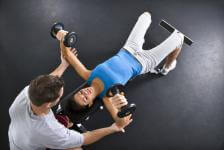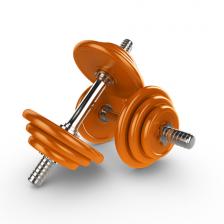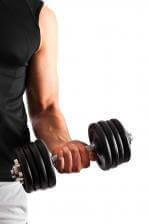What Kind of Weight Lifting Burns the Most Fat?
Occasionally, there comes a time for your trusted Get-Fit Guy to change opinions and teachings based on the cutting-edge research that I’m constantly delving into. Today, I’m going to reveal something I was wrong about when it comes to fat loss.
Ben Greenfield
Listen
What Kind of Weight Lifting Burns the Most Fat?
Occasionally, there comes a time for your trusted Get-Fit Guy to change his opinions and teachings based on the cutting-edge research that I’m constantly delving into. Today, I’m going to reveal something I was wrong about when it comes to fat loss.
You see, in the episode What Is the Best Workout for Fat Loss?, I give you the 5 characteristics of a successful fat loss program:
Convenience. This means that you can do it anywhere, without being forced to spend two hours at a gym, access special equipment, or purchase expensive gadgets.
-
Full body. Every muscle in your body needs to be targeted for a maximum metabolic boost, so combine upper and lower body exercises.
-
Heart rate stimulation. For maximum cardiovascular stimulation, the workout should require that you move from exercise to exercise with minimal rest.
-
No heavy weights. To maximize fat loss, you need to be able to do more than 8 repetitions of an exercise.
-
Consistency. You should be able to do the workout 2-4 times each week, without having to rest for several days due to excessive soreness.
It turns out that based on the latest research, I was wrong about one of those points. Can you guess which one?
Number 4 – No heavy weights.
As a matter of fact, I recently found a study that showed that heavy weight lifting burns mostly fat!
What Kind of Weight Lifting Burns the Most Fat?
The study – entitled “Oxygen Consumption and Substrate Use After Resistance Exercise” – compared the effects of different types of workout intensity and weights on the amount of fat that the study participants burned after the exercise was over.
The researchers had 16 male students, all of whom had been training for at least 6 months, do weight training at different intensities. At one point, they trained at high intensity in which they completed 3 sets of 10 reps at 75% of their one repetition maximum (1RM). Then they trained at low intensity, completing 3 sets of 15 reps at 50% of their 1RM. The amount of energy each student used during the low intensity and high intensity training sessions was practically the same.

It turns out that after the training session with heavy weights the participants’ post exercise oxygen consumption (aka, the metabolic rate) was higher than after the training with the light weights. Even more interestingly, the increased energy expenditure after the training session was mainly derived from fat stores!
The researchers summed it up this way:
“The study demonstrated that EPOC and fat oxidation after HI were higher than after LO, and energy expenditure in the recovery period after HI was also greater than after LO. Thus, we conclude that high-intensity resistance exercise is a better choice in weight control programs for energy expenditure.”
A Perfect Fat Loss Weight Lifting Workout

Here’s a perfect routine to incorporate the concepts you’ve just learned, along with the additional fat-burning cardio burst strategy that I outline in the episode Which Workout Burns the Most Fat?:
-
Warm up with 5-10 minutes of cardio and dynamic stretching. By the way, there’s no need to do long cardio prior to a weight training session. In fact, if you want to maximize the effectiveness of a weight training workout, recent research shows that you should actually not do a long aerobic warm-up!
-
Do 5-8 repetitions of each of the following exercises, with a controlled tempo and good form. Choose a weight that allows you to do at least 5 reps, but completely fatigues you by the 8th rep. Rest for 60-90 seconds after each set. Do this entire routine as a circuit – starting with the first exercise and moving to the last. If you’re a beginning weight lifter, then once you’ve made it through the entire circuit, you’re done. If you’re more advanced, complete 2-4 rounds.
- Barbell Squat
- Dumbbell Overhead Press
- Dumbbell Walking Lunge
- Pull-Up (weighted if necessary) or Pull-Down (preferably with a wide, overhand grip)
- Machine Chest Press or Dumbbell Bench Press
- Barbell Deadlift
- 30-60 second cardio “burst” on elliptical, rowing machine, treadmill, jump rope, stair climber, etc.
- Cool down, preferably with foam rolling and a cold shower.
You can simply do this routine 1-2 times per week, and then add in a few fasted morning walks, a couple of days of high intensity cardio intervals, and one longer weekend workout such as a swim, paddleboard, long walk, bike ride, or hilly hike, and you’ve got the perfect fat loss scenario!
If you have more questions about the best kind of weight lifting for burning the most fat, then leave your thoughts and join the discussion over at Facebook GetFitGuy.



